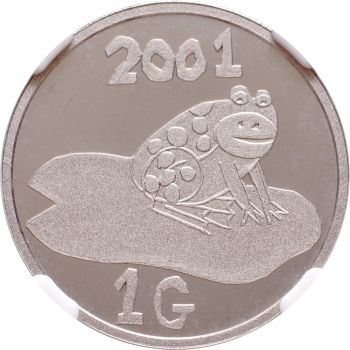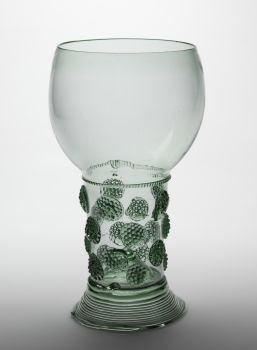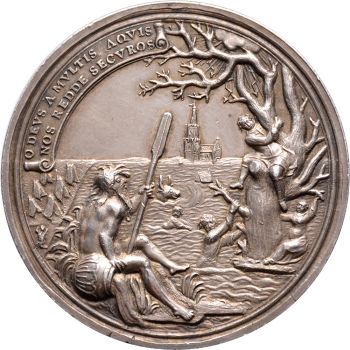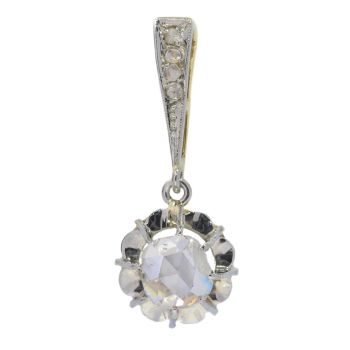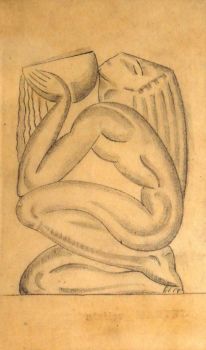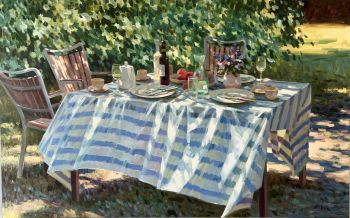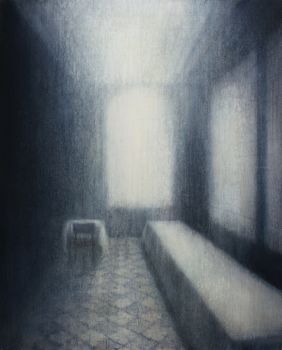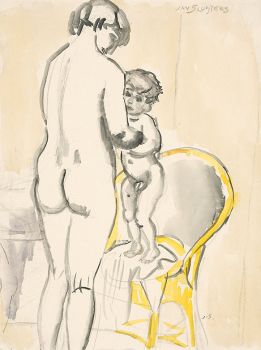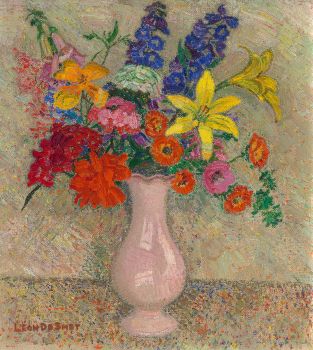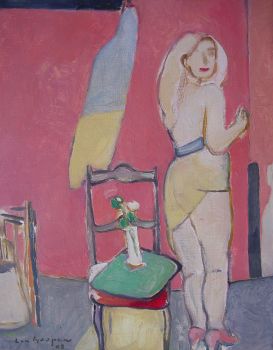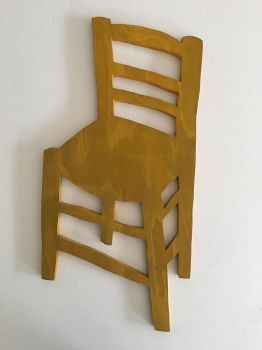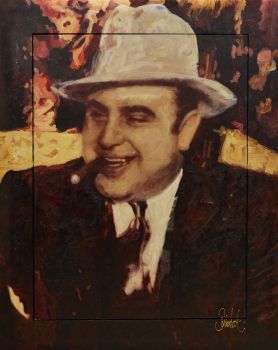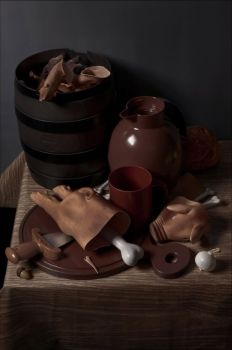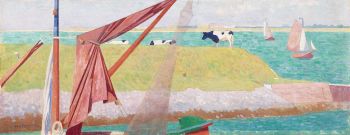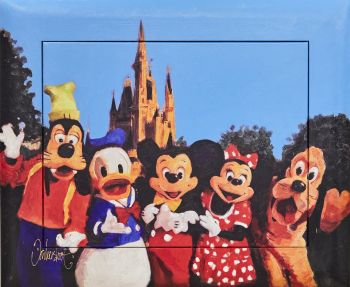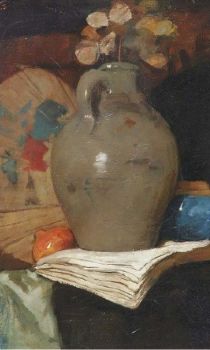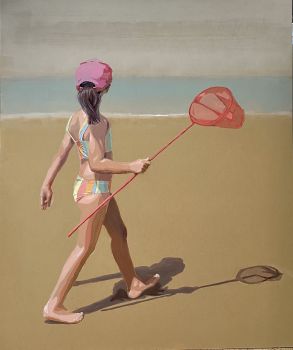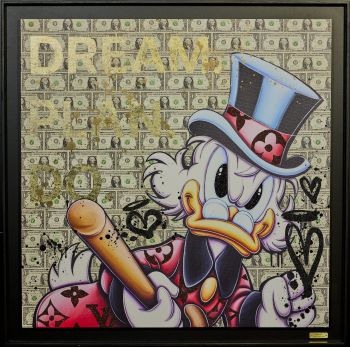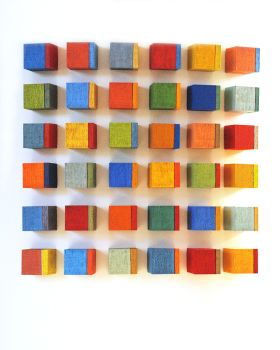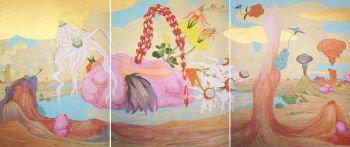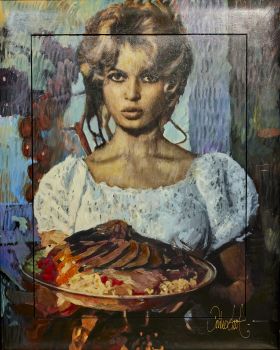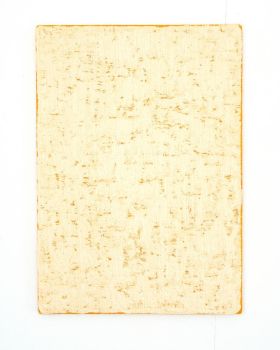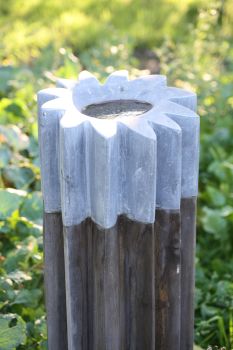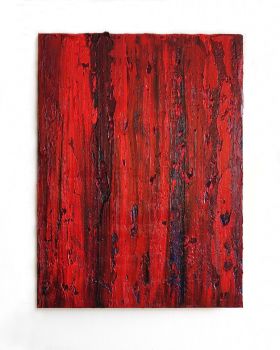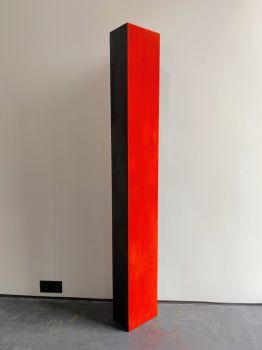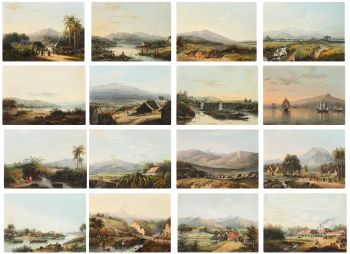UNA EXTRAÑA ESCULTURA COLONIAL FRANCESA DE UNA PAREJA DE LAS ANTILLAS FRANCESAS, BEBIENDO RON Y CHOC 18th century
Artista Desconocido
Madera
Actualmente no disponible a través de Gallerease
Zebregs & Röell - Fine Art - Antiques
- Sobre la obra de arteA RARE FRENCH COLONIAL SCULPTURE OF A COUPLE FROM THE FRENCH WEST INDIES, DRINKING RUM AND CHOCOLATE
The French Antilles or French Guyana, late 18th/early 19th century
The painted plaster figures with wood, glass and gilt braid, seated at a table, happily drinking and conversating, on a rectangular black base with four bun feet.
H. 20 x W. 27 x D. 18 cm
Provenance:
Joseph-Armand Coudre la Coudrais (1751-before 1809) and thence by descent.
Joseph-Armand came from a family of sailors and was captain of the Phénix and the L’aimable Rose, importing rum and cacao from the French West Indies.
So possibly Joseph-Armand himself commissioned this sculpture of the rum and cacao drinking couple in the French West Indies. His portrait is in the Musée de la Marine in Honfleur.
Note:
This sculpture makes one think of the diorama’s made by Gerrit Schouten in Dutch Guyana/Surinam. Schouten’s clients were Europeans who visited Surinam for a shorter or longer period. Gerrit Schouten, who’s mother was a mulatto and father a Dutchman, depicted the African slaves in Surinam almost exclusively while performing a slavedance, a du (see for an example Uit Verre Streken, June 2008,item 8). Once or twice a year the slaves on the plantations were allowed to make music, dance and dress-up for two or three days. These du’s, which ofcourse presented a very limited but colourful picture of “happy” slave-life in Surinam, were very popular among tourists who afterwards ordered a diorama of a slave dance from Gerrit Schouten.
In the background, a detail of a chromolithograph titled Baumwolle (cotton) from the series Ausländische Kulturpflanzen by Goering & Schmidt, printed and edited by F.E. Wac - Sobre el artista
Puede suceder que un artista o creador sea desconocido.
Algunas obras no deben determinarse por quién está hecho o por (un grupo de) artesanos. Algunos ejemplos son estatuas de la Antigüedad, muebles, espejos o firmas que no son claras o legibles, pero también algunas obras no están firmadas en absoluto.
También puedes encontrar la siguiente descripción:
•"Atribuido a …." En su opinión, probablemente una obra del artista, al menos en parte.
•“Estudio de….” o “Taller de” En su opinión, una obra ejecutada en el estudio o taller del artista, posiblemente bajo su supervisión
•“Círculo de…” En su opinión, una obra del período del artista que muestra su influencia, estrechamente asociado con el artista pero no necesariamente su alumno.
•"Estilo de …." o “Seguidor de…”. En su opinión, una obra ejecutada al estilo del artista pero no necesariamente por un alumno; puede ser contemporáneo o casi contemporáneo
•"Manera de …." En su opinión una obra al estilo del artista pero de fecha posterior
•"Después …." En su opinión, una copia (de cualquier fecha) de una obra del artista
•“Firmado…”, “Fechado…” o “Inscrito” En su opinión, la obra ha sido firmada/fechada/inscrita por el artista. La adición de un signo de interrogación indica un elemento de duda.
•“Con firma…”, “Con fecha…”, “Con inscripción…” o “Lleva firma/fecha/inscripción” en su opinión la firma/fecha/inscripción ha sido añadida por alguien que no es el artista
¿Está interesado en comprar esta obra de arte?
Artwork details
Related artworks
- 1 - 4 / 12
Artista Desconocido
UN NETSUKE DE MARFIL DE UN HOLANDÉS CON UNA COCKEREL18th century
Precio a consultarZebregs & Röell - Fine Art - Antiques
Artista Desconocido
The Stamford Raffles Secretaires.1800 - 1813
Precio a consultarZebregs & Röell - Fine Art - Antiques
Artista Desconocido
UN NETSUKE MARINE MARFIL DE UN HOLANDÉS CON UN VENTILADOR CHINO18th century
Precio a consultarZebregs & Röell - Fine Art - Antiques
Artista Desconocido
UN RARO TELESCOPIO DE CUERO LACADO JAPONÉS GRANDE1750 - 1800
Precio a consultarZebregs & Röell - Fine Art - Antiques
Artista Desconocido
UN PEQUEÑO NETSUKE DE MARFIL DE UN HOLANDÉS CON UN TAMBOR1750 - 1800
Precio a consultarZebregs & Röell - Fine Art - Antiques
Artista Desconocido
PAREJA DE ANTORCHAS O VELAS DE TECA DORADA Y LACADA INDONESIA18th century
Precio a consultarZebregs & Röell - Fine Art - Antiques
1 - 4 / 24Artista Desconocido
A Surinam-themed Amsterdam long-case clock1746 - 1756
Precio a consultarZebregs & Röell - Fine Art - Antiques
 curada por
curada porGallerease Magazine
Artista Desconocido
Japanese transition-style lacquer coffer 1640 - 1650
Precio a consultarZebregs & Röell - Fine Art - Antiques
Jan Sluijters
Greet met Jantje, Moeder met kind, naakt op een stoel staand1900 - 1940
Precio a consultarStudio 2000 Art Gallery
1 - 4 / 24Cornelis Rudolf Hendrik Spoor
STILLEVEN | JUDASPENNING IN EEN VAAS1867 - 1928
Precio a consultarGalerie Het Noorderlicht
Rene Rietmeyer
''Installation Miami-Beach 2006''2006
Precio a consultarEuropean Cultural Centre Collection
1 - 4 / 24Dutch School
Llegada de un holandés de las Indias Orientales a Table Bay18th century
Precio a consultarZebregs & Röell - Fine Art - Antiques
Abraham Salm
Twenty-four chromolithographs of Java after A. Salm”1801 - 1876
Precio a consultarZebregs & Röell - Fine Art - Antiques
 curada por
curada porDanny Bree
Eduard Charlemont
‘Allegories of Africa and America’1872
Precio a consultarZebregs & Röell - Fine Art - Antiques
Artista Desconocido
PAREJA DE ANTORCHAS O VELAS DE TECA DORADA Y LACADA INDONESIA18th century
Precio a consultarZebregs & Röell - Fine Art - Antiques
Artista Desconocido
A rare Japanese export lacquer medical instrument box1650 - 1700
Precio a consultarZebregs & Röell - Fine Art - Antiques
Paulus Franciscus Kromjong
Flores frente a Arearea Aka (alegría) por Gauguin '20th century
Precio a consultarZebregs & Röell - Fine Art - Antiques
1 - 4 / 12


